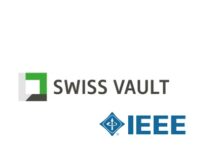ABB and InsightaaS have combined to produce a new report that consolidates insights from a diverse group of data center professionals examining the business rationale for investment in advanced power management technologies.
“The Shamrock Accords” is the work product arising from an innovative lunch session hosted by ABB at the DatacenterDynamics Converged conference in New York. Named in honour of the event’s timing (the session was held on St. Patrick’s Day), the lunch divided 25 data centre professionals into four groups, each focused on a task: to evaluate the ability of a power management technology to help IT to meet key corporate objectives.
 Each group was asked to describe whether “their” technology – DCIM, microgrids, medium-voltage AC and renewables and alternative power sources – could help data centre management at the fictitious “Shamrock Corp.” to address five very real corporate objectives: better power reliability, better power quality, improved resiliency (to ameliorate the effect of disasters or outages), a reduction in power costs, and/or improvements in the corporation’s Corporate Social Responsibility (CSR) profile. Drawing on detailed briefing notes, ABB subject matter experts and their own deep domain expertise, the groups identified key technology attributes and adoption issues, and prepared reports for management describing their perspectives on whether and how each technology could help the business to achieve one or more of the corporate objectives, and whether an investment in the technology would be beneficial to a services enterprise like Shamrock Corp.
Each group was asked to describe whether “their” technology – DCIM, microgrids, medium-voltage AC and renewables and alternative power sources – could help data centre management at the fictitious “Shamrock Corp.” to address five very real corporate objectives: better power reliability, better power quality, improved resiliency (to ameliorate the effect of disasters or outages), a reduction in power costs, and/or improvements in the corporation’s Corporate Social Responsibility (CSR) profile. Drawing on detailed briefing notes, ABB subject matter experts and their own deep domain expertise, the groups identified key technology attributes and adoption issues, and prepared reports for management describing their perspectives on whether and how each technology could help the business to achieve one or more of the corporate objectives, and whether an investment in the technology would be beneficial to a services enterprise like Shamrock Corp.
The results of the four group discussions are captured in “The Shamrock Accords.” The 12 page document is unique in assembling multiple viewpoints on the business benefit associated with the four power management technologies discussed during the lunchtime session. Each section provides a concise overview of the technology, a brief “context” section that describes how the technology is used within the business, and then highlights from the group discussions and presentations, capped by summary charts that illustrate issues addressed by the technology, the most important attributes and adoption issues, and the key benefits associated with adoption.
These sections describing the output from the sessions are important reading for data centre professionals looking to understand how to apply advanced power management strategies in either brownfield or greenfield operations. For example:
- The DCIM section describes how DCIM will reduce data centre costs (power, and also maintenance and licensing) and improve power reliability. It discusses DCIM’s “ability to identify and define problem areas, providing scoping for data center workloads, and its capacity to integrate internal and external data,” and delves into the challenge of identifying tools that are appropriately matched with business needs.
- The microgrids section states that key attributes include “efficiency, sustainability, operating cost optimization, reliability and energy security” – a list that is well-matched to the dictates handed to the working group at the beginning of the exercise – adding that “improving power quality by being able to have synchronized sources of power available…is quite important, especially given the aging power grid and the increasing frequency of weather-related and other power interruptions.”
- The medium-voltage AC section drills down into issues that are of particular importance to commercial data centre operators: “one key attribute of medium voltage AC is its ability to reduce the overall footprint associated with power management equipment. Because they handle higher loads than low voltage units, they take up less floor space than low voltage systems, increasing the amount of ‘white space’ than can be dedicated to IT equipment. Medium voltage solutions also require less cabling, which also has an impact on footprint (and cost). Other attributes include the ability to support the migration to new technology in retrofit situations…”
The document closes by noting that as the importance of reliable IT service delivery increases, “we can expect to see more companies act as Shamrock Corp. did in our example, pressing IT to explore options for better power reliability, quality and redundancy.” “The Shamrock Accords” provides an important resource for managers in these companies by outlining the practical considerations associated with key options for better IT power management.
Click here to download your own copy of The Shamrock Accords








